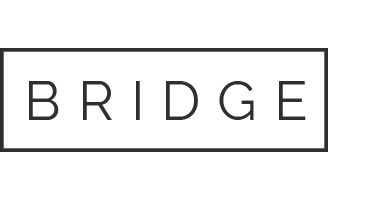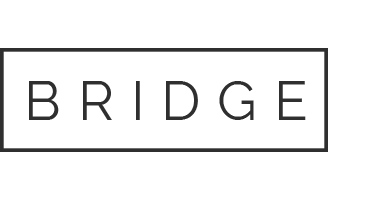
07 Jan 4 Steps to Successful Sales Planning in 2018 (Part One)
Now that 2017 is behind us, it’s time to plan for a successful 2018. As a sales manager, its important to be proactive in managing your sales team towards your team goals.
Being proactive all starts with a plan. This involves a business planning discussion with each of your salespeople. The purpose of the meeting is to review the sales rep’s performance for the prior year and develop a plan for achieving quota this year. The agenda for this discussion consists of four steps:
- Review of Previous Year
- Communicate Strategy, Priorities, & Policy Decisions
- Planning & Goal Setting for 2018
- Align Coaching & Development Activities
The output of this meeting with each sales rep will be an individual sales plan. The plan is the road map for how the sales rep will achieve his/her quota and outlines the required business results, sales objectives, activities, and competencies.

The individual sales plan should be reviewed monthly, as part of ongoing monitoring and execution. This will allow both you and your sales rep to fine-tune and make adjustments as needed.
In part one of this article, we discuss how to conduct a review of the previous year with the salesperson. Part two addresses how to communicate the strategy, priorities, and set targets with each of your reps. Finally, in part three we address how to align coaching and development efforts.
So without further adieu here is the step-by-step guide for how to conduct the first portion of the business planning meeting: the annual business review.
1. Review Past Sales Results
After you’ve set the tone for the meeting, begin the discussion with your sales rep by reviewing the business results the sales rep achieved for the prior year.
- What sales results were achieved in terms of revenue, profit, or market share?
- How did the results compare to the sales rep’s forecast?
- Did the rep achieve his/her quota?
- How healthy is the rep’s pipeline?
Take some time to discuss any trends over the last year. Which quarters were lower than others? Why? Were they due to factors within the sales rep’s control?
Even though sales results are a measure of corporate health, sales results cannot be managed. To have any control over sales results we need to review how the sales rep performed against his/her sales objectives.
2. Review Past Sales Objectives
The next part of the agenda involves an examination of how well the salesperson performed against customer and product objectives.
Customer Objectives
The customer objectives look at whether the salesperson targeted the right customers. It answers the question, “How did the salesperson do in attracting, retaining, and growing customers?”
- Customer Mix – Did the salesperson have the right customer mix? What % of business came from new versus existing customers?
- New Customers – How did the salesperson do with new customer acquisition? How many new customers were acquired? How much new business was won?
- Existing Customers – How much was the increase in wallet share with each account? How does it compare to potential?
Product Objectives
Next focus on reviewing the rep’s performance against product objectives. Product objectives provide the salesperson with goals on what types of products to sell. It answers the question, “Did the salesperson sell the right types of products and services for the company?”
Product objectives may include:
- Product Mix – Did the salesperson sell the right mix of products & services? How much revenue came from each product?
- Size – What was the average deal size?
- Volume – How many units of each product were sold?
By reviewing the sales rep’s performance against sales objectives, you will begin to uncover the reasons why the salesperson achieved (or did not achieve) his/her sales quota. However just like sales results…you cannot manage sales objectives. This is why it’s critical to review past sales activities.
3. Review Past Sales Activities
Sales activities are the building blocks of control. These are the things you can directly manage. Sales activities that are focused on the right sales objectives will lead to the right shape of sales results.

Through managing and measuring sales activity you answer the question, “Did the salesperson put in the right amount of activity in the right direction and in the right way?” Thus, a comprehensive analysis involves three activity levers:
- Volume – Did the salesperson put in enough effort? Metrics such as the number of calls, discovery meetings, demos, or proposals are all indicative of effort.
- Focus – Where did the salesperson allocate his effort? This includes measuring the percentage of contact with new buyers or the number of visits to executive buyers.
- Quality – What were the sales rep’s conversion ratios at each stage of the sales process? Compare the sales rep’s conversion ratios against benchmarks to assess sales activity quality.
By reviewing the sales rep’s activity, you increase the level of awareness on whether the right actions were performed in the right way to achieve the sales objectives.
4. Review Competence Development
The last area you should review is the knowledge and skills the salesperson developed. By reviewing and discussing the salesperson’s personal development, you gain insight into the salesperson’s ability to achieve activity targets.
During this portion of the meeting you should discuss:
- Competencies – Which competencies did the salesperson develop over the last year?
- Development Methods – How did the salesperson develop these knowledge and skill areas? This could involve training events, seminars and workshops, ride-alongs, one-on-one’s, or online learning activities.
- Coaching – Did all the agreed upon coaching activities take place with the rep throughout the year?
You should look for evidence of skill application by examining the link between new behaviors and respective changes in sales activity.
At this point of the meeting, you should shift the focus from the past to the present. This is where you communicate and explain the company’s strategy, priorities, and policy decisions for the year. Then you will focus on the future which involves setting targets and collaborating with the sales rep on a plan for how the rep will achieve the sales targets. Stay tuned for part two of this article where we’ll dive into this portion of the discussion in full detail.


